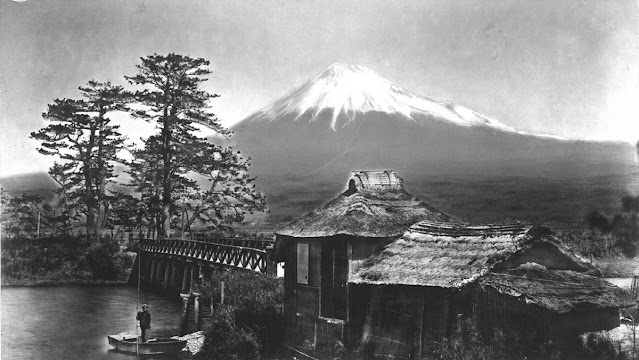RAFAEL TROYA (1845 -1920)
Imbabura volcano (4, 630m - 15,190ft)
Ecuador
In Vista general de Ibarra (con volcan Imbabura), oil on canvas, circa 1918 (1,94 x 3,24 cm)
Casa de la Ibarreñidad, Ibarra
The mountain
Imbabura (4, 630m - 15,190ft) is an inactive stratovolcano in northern Ecuador. Although it has not erupted for at least 14,000 years, it is not thought to be extinct. Imbabura is intermittently capped with snow and has no permanent glaciers. Covered in volcanic ash, the slopes of Imbabura are especially fertile. In addition to cloud forests, which are found across the northern Andes to an altitude of 3000 m, the land around Imbabura is extensively farmed. Maize, sugarcane, and beans are all staple crops of the region. Cattle are also an important commodity, and much of the land on and around Imbabura, especially the high-altitude meadows above the tree line, is used for grazing.
As the dominant geographic feature of the area, Imbabura is of significant importance to the local culture, which involves a spiritual relationship with the land. The mountain is sometimes personified locally as Taita Imbabura, or Papa Imbabura. In fact, Imbabura is considered the sacred protector of the region. One of boulders ejected by Imbabura's last eruption, which landed nearby in Peguche, was revered as Achilly Pachacamac, the supreme god, by pre-Incan peoples. According to local legend, Mojanda and Imbabura each hurled stones across the valley; but Imbabura, who is often characterized as a womanizer, was weakened by his amorous affairs, and his rock fell short. The stone has been carved into the shape of a face. It is said that Imbabura fought with Mojanda to win the love of Cotacachi, who became his wife. When Cotacachi is snowcapped in the morning, it is said that Imbabura has been with her during the night. Building upon these legends, some of the smaller peaks nearby, especially Yanahurca (or Wawa Imbabura) north of Cotacachi, are called the offspring of the two. When it rains in Otavalo and surrounding areas, it is also said that Imbabura is "peeing" in the valley. On a western slope, an area of loose earth perfectly resembles a heart. This area, known as the "heart of the mountain" is much beloved by residents and appears in local art depicting the volcano. The area is said to be enchanted, as no human nor animal has been capable of scaling or hiking across the area.
The painter
Rafael Troya (1845-1920) was an Ecuadorian painter born, the son of the painter Vicente Troya. Being a teenager, he is taken to the Colegio de la Compañia de Jesus in Quito, but he soon abandons the clerical career to dedicate himself to what was his true vocation: painting. With the painter Luis Cadena, he learns the technique of colors. In 1872, he definitely choose the landscape and accompanied Reis and Stübel on their study trips in Ecuador on Nature and Archeology. Troya becomes the portraitist of nature, painting compositions full of color and life. In 1890 he came back in the capital of Imbabureña, and decided to be completely dedicated to his art. There he made several masterpieces, such as the paintings on the Apostles, which today are admired in the Ibarra Cathedral, the Ibarra Foundation, preserved in the Hall of the city of Ibarra; Allegory of love, panoramic view of Ibarra; The earthquake of Imbabura, and several religious canvases that are conserved in some churches of Quito, in the church of Caranqui and in the Museum of the Central Bank of Quito. In his paintings, green and bluish tones predominate, characteristic of his native land. He painted a lot of mountains of the Andes and the most famous volcanoes of the Cordillera.
_____________________________
2019 - Wandering Vertexes...
by Francis Rousseau





















